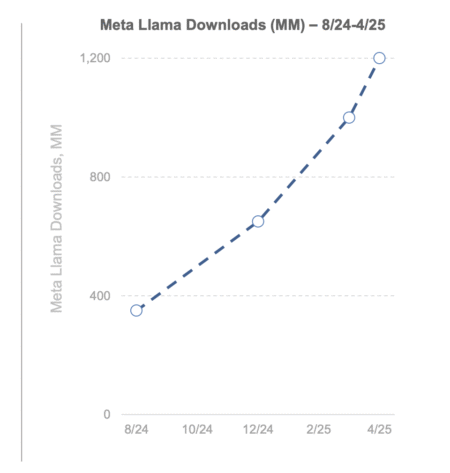

Smartphones are essential tools in dAIly life. However, the complexity of tasks on mobile devices often leads to frustration and inefficiency. Navigating applications and managing multi-step processes consumes time and effort. Advancements in AI have introduced large multimodal models (LMMs) that enable mobile assistants to perform intricate operations autonomously. While these innovations aim to simplify technology, they often fail to meet practical demands. Addressing these gaps requires advanced AI capabilities and adaptable systems.
Current mobile assistants struggle to handle complex tasks requiring long-term planning, reasoning, and adaptability. Tasks like creating itineraries or comparing prices involve multiple steps across platforms. These systems treat each task as isolated, lacking the ability to learn from experience or optimize performance for repeated tasks, leading to inefficiency. Also, allocating identical resources to all tasks, regardless of complexity, reduces effectiveness in demanding scenarios.
Some frameworks address these challenges but remain limited in planning and decision-making. Current mobile agents like AppAgent and Mobile-Agent-v1 focus on short, predefined tasks. Systems like Mobile-Agent-v2, despite improved planning, fail to incorporate a hierarchical structure for effective task delegation and refinement. These limitations highlight the need for more advanced mobile assistant designs.
Researchers from the University of Illinois Urbana-Champaign and Alibaba Group have developed Mobile-Agent-E, a novel mobile assistant that addresses these challenges through a hierarchical multi-agent framework. The system features a Manager agent responsible for planning and breaking down tasks into sub-goals, supported by four subordinate agents: Perceptor, Operator, Action Reflector, and Notetaker. These agents specialize in visual perception, immediate action execution, error verification, and information aggregation. A standout feature of Mobile-Agent-E is its self-evolution module, which includes a long-term memory system. This memory is divided into two components:
- Tips, which provide generalized guidance based on previous tasks
- Shortcuts, which are reusable sequences of operations tailored to specific recurring subroutines
Mobile-Agent-E operates by continuously refining its performance through feedback loops. After completing each task, the system’s Experience Reflectors update its Tips and propose new Shortcuts based on interaction history. These updates are inspired by human cognitive processes, where episodic memory informs future decisions, and procedural knowledge facilitates efficient task execution. For example, if a user frequently performs a sequence of actions, such as searching for a location and creating a note, the system creates a Shortcut to streamline this process in the future. Mobile-Agent-E balances high-level planning and low-level action precision by incorporating these learnings into its hierarchical framework.
The performance of Mobile-Agent-E has been tested using a new benchmark called Mobile-Eval-E, which evaluates the system’s ability to handle complex real-world tasks. Compared to existing models, Mobile-Agent-E achieves significantly higher satisfaction scores, with a 15% increase in task completion rates. Also, evolved Tips and Shortcuts reduce computational overhead, enabling faster task execution without compromising accuracy. For instance, a single Shortcut that combines actions like “Tap,” “Type,” and “Enter” can save two decision-making iterations, improving efficiency. The system’s hierarchical design enhances error recovery, allowing it to adapt to unforeseen challenges during task execution.
Key takeaways from this research include the following:
- Mobile-Agent-E features a Manager agent supported by four specialized subordinate agents, enabling efficient task delegation and execution.
- The system continuously updates its Tips and Shortcuts, inspired by human cognitive processes, to improve performance and reduce redundant errors.
- Shortcuts reduce computational overhead, resulting in faster task execution with fewer resources. For example, task completion time decreased by 20% compared to previous models.
- Mobile-Agent-E achieved a 15% increase in satisfaction scores compared to state-of-the-art models, demonstrating its effectiveness in real-world applications.
- The system’s capabilities extend to various scenarios, such as planning itineraries, managing notes, and comparing prices across apps, showcasing its versatility and adaptability.
In conclusion, Mobile-Agent-E bridges the gap between user needs and technological capabilities by addressing critical challenges in task management, planning, and decision-making. Its hierarchical framework and self-evolution capabilities enhance efficiency and set a new benchmark for intelligent mobile assistants. This research highlights the potential of AI-driven solutions to transform human-device interaction, making technology more accessible and intuitive for all users.
Check out the Paper, GitHub Page and Project Page. All credit for this research goes to the researchers of this project. Also, don’t forget to follow us on Twitter and join our Telegram Channel and LinkedIn Group. Don’t Forget to join our 70k+ ML SubReddit.
The post Mobile-Agent-E: A Hierarchical Multi-Agent Framework Combining Cognitive Science and AI to Redefine Complex Task Handling on Smartphones appeared first on MarkTechPost.
Source: Read MoreÂ





